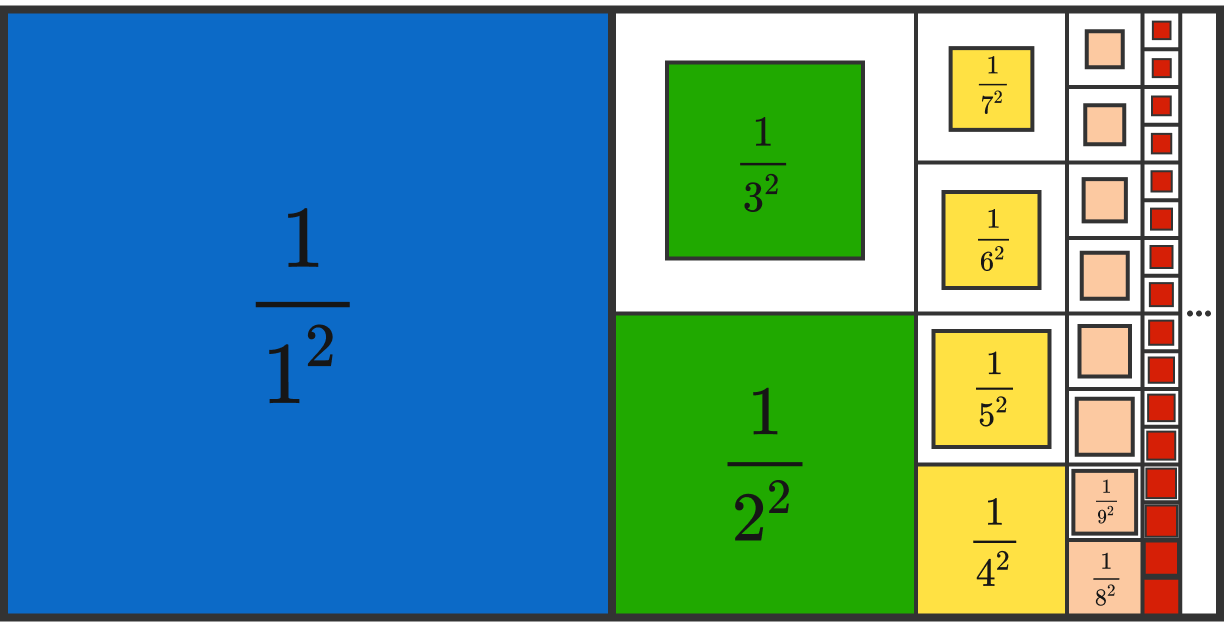Proof Without Words

What mathematical fact is demonstrated above?
This section requires Javascript.
You are seeing this because something didn't load right. We suggest you, (a) try
refreshing the page, (b) enabling javascript if it is disabled on your browser and,
finally, (c)
loading the
non-javascript version of this page
. We're sorry about the hassle.
1 solution
Moderator note:
How do we know that the big blue square has half the area of the rectangle?
We're using the fact that
2
0
1
+
2
1
1
+
2
2
1
+
2
3
1
+
…
=
2
.
That is indeed an interesting observation. It turns out that ∑ n 1 is, however, divergent. This means no matter how large a real number you choose, you cannot bound the sum with it.
This is a really neat way of proving that the sum of reciprocal of squares is a convergent sequence mainly because it uses simple geometry concepts like area of squares.
In fact, the sum converges to 6 π 2 which is about 1.644... Can we find a tighter upper bound (or find the actual convergent value) by using geometry?
Log in to reply
I don't know how to find a tighter upper bound using geometry, but I did manage to show that the upper bound can be reduced in a systematic manner. Take a look below!
j = 1 ∑ ∞ j 2 1 = 1 + 2 2 1 + j = 3 ∑ ∞ j 3 j < 4 5 + j = 3 ∑ ∞ ( j − 1 ) j ( j + 1 ) j = 4 5 + j = 3 ∑ ∞ ( j − 1 ) ( j + 1 ) 1 = 4 5 + 1 2 5 = 3 5
with the final series represents a telescoping series .
Surely, we can improve on this even further, right?
Log in to reply
Very nice reduction. 3 5 = 1 . 6 6 6 which is very close to 6 π 2 , so I think any further improvement will take a lot of work.
Of course, we could pull out an additional term before doing the partial fraction summation (but that to me doesn't constitute a different approach).
Well that is why I saw it as a 'demonstration', more than a proof. Because if you look at it in a different way, you may use this argument to intuitively demonstrate the correct answer. I know that is not a proof, but that is not how I interpreted 'demonstrated' .
The big blue square has half the area of the rectangle => the area of the rectangle is 2.
The area of the squares gets smaller according to a series determined by n 2 1 .
All these squares fit together into the big rectangle.
=> The sum of these areas is smaller than 2, the series converges to something smaller than 2